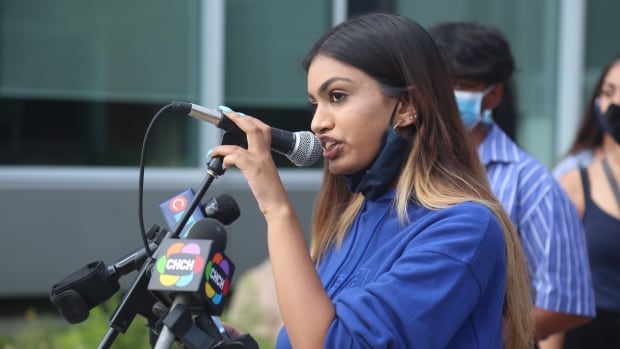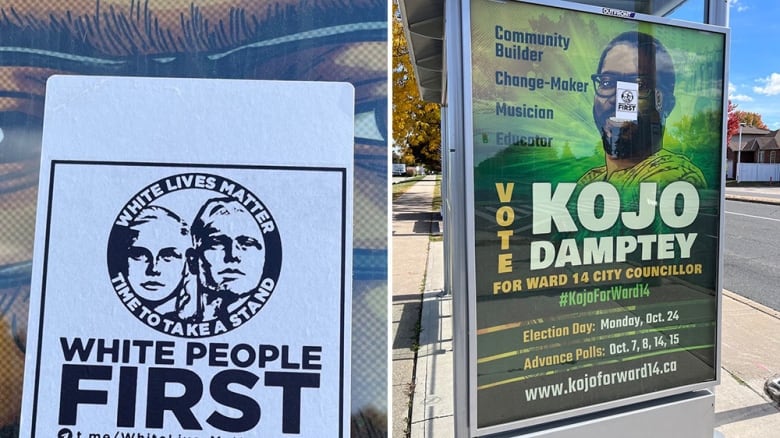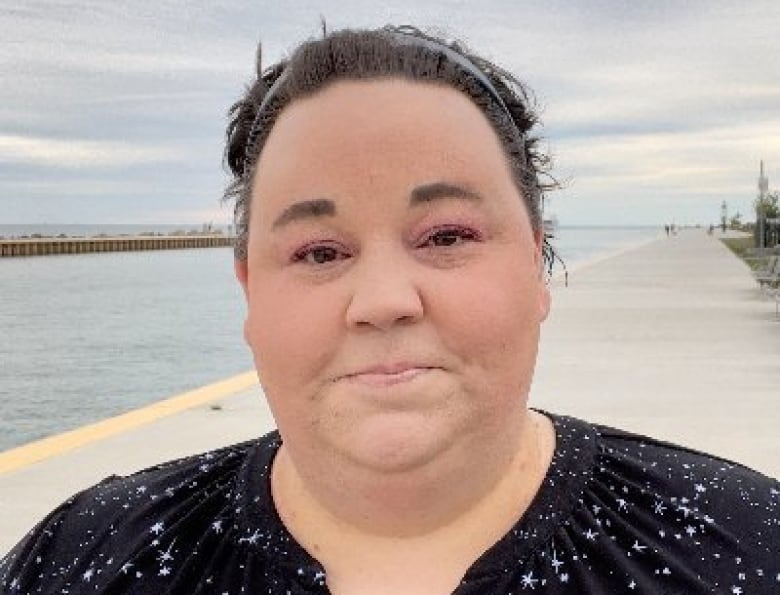
Warning: The story details experiences and includes language that are disturbing.
One of the first times Ahona Mehdi canvassed Hamilton homes in her efforts to become a local public school board trustee was memorable for all the wrong reasons.
“I was spit on in the face,” the 19-year-old told reporters earlier this week as she recalled her campaign experience.
Mehdi, who is Muslim, said that wasn’t her only brush with hate.
“I’ve been told by a parent we need to remove Muslim girls from schools … [And] a few days before the election, I received an anonymous call and was told to choke and die.”
Whether it involved first-time candidates or lifelong politicians, toxicity and hate in Ontario’s municipal election seemed to be more venomous than past years, particularly for people from equity-seeking communities, several candidates told CBC Hamilton following the Oct. 24 vote.

“This election, there was much more nastiness,” said Nrinder Nann, a re-elected councillor who in 2018 was the first woman of colour to become a Hamilton city councillor.
“I know some of my friends in other cities that were running this year were also experiencing it. It’s happening across the board.”
Nann said that while going door to door this year, one resident “slammed the door in my face, saying, ‘Not that brown bitch.'”
“We also had some people walk by our campaign office, hitting on the windows, trying to intimidate and cause some upset … we thought it was a one-off, but it started happening more regularly,” she said.
Hamilton mayor-elect Andrea Horwath had a sign vandalized with misogynistic slurs and imagery, while Ward 14 candidate Kojo Damptey had a white supremacist sticker placed on one of his campaign advertisements. Both instances led to police investigations.
The incidents occurred after several candidates — from Cambridge to Scarborough to Simcoe North — faced hate and vandalism on the campaign trail leading up to the Ontario election in June.
Elected officials across Ontario — including in Waterloo, Niagara region and Ottawa — received threats, especially during the height of the pandemic, causing some, such as former Ottawa-Carleton District School Board trustee Keith Penny, not to run again last month.
Councillor privatizes Twitter account after election
The bitterness appeared online this election campaign as well.
Sabrina Hill, who registered earlier this year as a regional councillor candidate for St. Catharines, said she was relentlessly targeted online for being an openly transgender candidate.
“I saw social media as the easiest and most effective way to reach out to potential voters,” Hill said.
A few months later, she resorted to only posting scheduled tweets because of the hostility that included accusations of Hill being a child groomer, among other allegations.
“I didn’t feel any real purposeful dialogue could exist,” she said.

Hill, who received 4,994 votes but was not elected as a regional councillor, also said she felt uncomfortable handing out election signs out of fear supporters would be targets of hate.
Greg Miller privatized his Twitter account after he was re-elected as a councillor in St. Catharines.
In that municipality, councillors are part time and often work full-time jobs elsewhere. With that, Miller locked his account because he was concerned the trolling could impact his other career as an employment coach.
“I felt targeted by some particular trolling on my tweets … that was getting very personal and frankly, dangerous … to my profession and my family,” Miller said.
Some possible solutions
Blayne Haggart, an associate professor of political science at Brock University in the Niagara area, said hearing about how Hill couldn’t use social media like others “hit a nerve,” given she likely needed them to win.
He said while some people oppose governments regulating social media because it may lead to chilling effects on free speech, it is apparent users are already being silenced because of the toxicity.
“One of the things it shows is the extent to which we as a society have outsourced our main means of communication to, essentially, unaccountable, private, mostly American entities that aren’t interested in promoting good social discourse,” Haggart said.
“Angry sells better than happy … we’ve left ourselves at the mercy of these companies.”
Karen Louise Smith, an assistant professor at Brock University who researches online privacy, said there are short-term solutions, like trying to report problematic content, which can lead to users being kicked off the platform.
“Another thing we can do is migrate to alternative platforms,” she said.
“More alternative or ‘indie’ social media platforms like Mastodon are currently seeing a surge of new users who are migrating away from Twitter … because of concerns about ownership and issues like content moderation on Twitter.”
Haggart said politicians and governments may also want to rely less on social media, and focus on scaling up their own websites and approaching local media outlets.
Nann suggested another answer may be for councillors and candidates to have conversations about the campaign.
“I am concerned things are going to get worse … this needs to be part of the discourse for us moving forward,” she said.
“I’m going to do everything possible in this term of council to facilitate more community dialogue, to bring people together.”